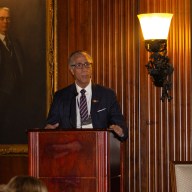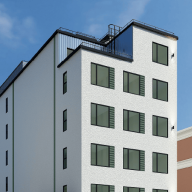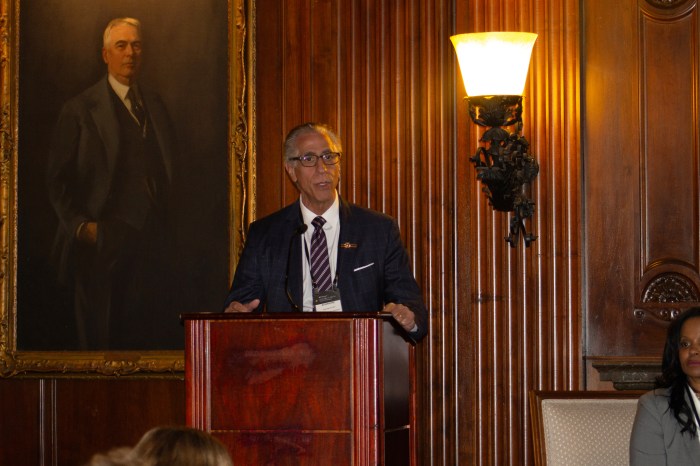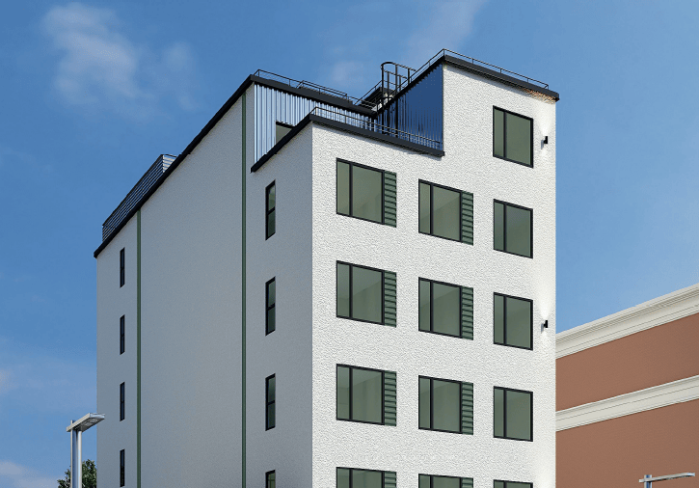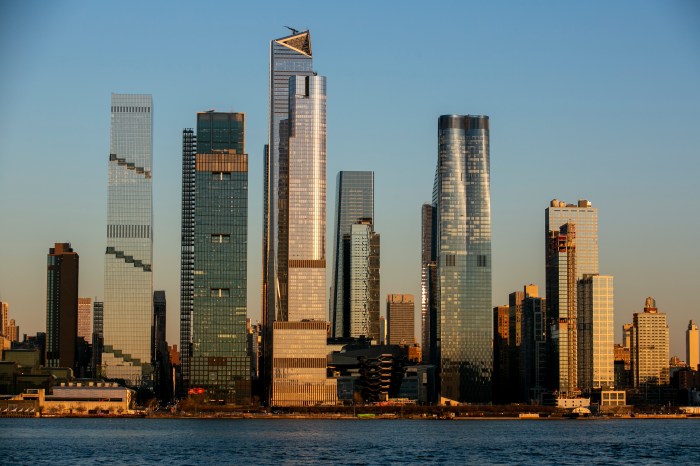Students at St. Raymond High School for Boys can breathe easy at last. The State Department of Environmental Conservation, State Department of Health, and engineers from Con Edison have found there to be no air or above ground contamination on the athletics field or in buildings left over from a roughly century-old gas plant ounce housed on school grounds.
The departments released a report in April that was presented to the public Thursday, May 26, at St. Raymond High School. The report found that a hazardous tar left over from production at the former Purdy Street gas plant remains on the site, from three to 20 feet underground, with the most contaminated areas underneath the athletic field. According to state and Con Edison officials, since the tar is sealed underground and does not affect groundwater that is being used for drinking, any exposure to the contaminants is very unlikely.
The findings were based on soil samples taken from nearly 30 sites across school property that were taken in 2004 and 2006. The samples were tested for the hazardous tar, pesticides, asbestos, and volatile organic chemicals. Indoor air studies were also conducted in 2002 and 2003. “We didn’t see any chemicals in those samples that were above what’s typical in the air,” Richard Rienzo, project manager for Con Edison, said. “We didn’t see anything on the surface soil, both visual and chemical.”
From the 1870s until the 1900s a manufactured gas plant, storage building and several gas holding tanks were housed on about 2.5 acres of property now owned by St. Raymond Parish. The plant was used to bake coal, which produced both burnable gas and the hazardous tar that contains carcinogens and other toxic chemicals. From the 1920s until 1960, the site was also used as a storage yard for Con Edison. Yet the plant and storage facilities were demolished before the property was sold to St. Raymond Parish in 1960, and the school was built shortly afterwards.
Since 2002 Con Edison has been looking into dozens of potentially contaminated sites that formerly housed manufactured gas plants across the state, including the former Purdy Street plant and nine others in the Bronx. The company has an agreement with the state to pay for the site investigations and any necessary remediation, while the state DEC and DOH will provide oversight for the projects.
According to Con Edison officials, the company is working with St. Raymond Parish to develop a number of options for handling the remainingcontamination. Douglas K. MacNeal, DEC project manager, said possible solutions include digging up and removing the hazardous tar, injecting substances underground to neutralize the contaminants, and developing a plan for using the property that will limit construction on the site to minimize potential exposure. “The material is still there, so we need to address this problem so there is no exposure in the future,” MacNeal said, adding that he hopes to have a plan selected within the next year so that any remediation work can begin the following year.
Only a handful of community members attended the informational meeting Thursday. Beverly Roberts, president of the Parkchester branch of the National Association for the Advancement of Colored People, said she came to learn about the topic for her constituents and the community.
“Anything that is going to affect the Parkchester community is going to affect the Parkchester NAACP,” she said. “I came to find out more about this and I did. I will be following this to be sure that what they said they’d do is what they do and that this is not taxing on the community.”
Officials with the Archdiocese of New York and St. Raymond Parish were not available for comment Friday.
For more information about the ongoing work and a copy of the report on the former Purdy Street plant visit www.coned.com/mgp
Reach Max Mitchell at (718) 742-3394 or mmitchell@cnglocal.com













